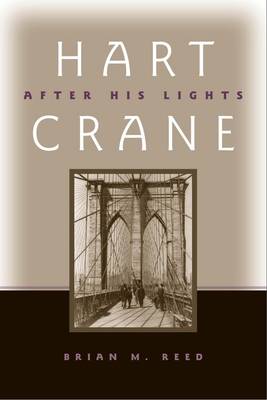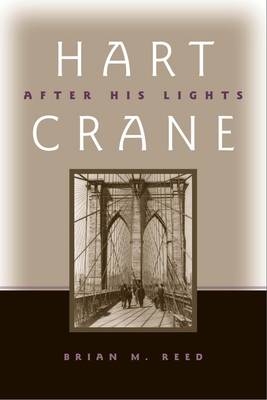
- Afhalen na 1 uur in een winkel met voorraad
- Gratis thuislevering in België vanaf € 30
- Ruim aanbod met 7 miljoen producten
- Afhalen na 1 uur in een winkel met voorraad
- Gratis thuislevering in België vanaf € 30
- Ruim aanbod met 7 miljoen producten
Zoeken
€ 44,95
+ 89 punten
Uitvoering
Omschrijving
A critical reassessment of the life's work of a major American poet. With his suicide in 1932, Hart Crane left behind a small body of work--White Buildings (1926) and The Bridge (1930). Yet, Crane's poetry was championed and debated publicly by many of the most eminent literary and cultural critics of his day, among them Van Wyck Brooks, Kenneth Burke, Robert Graves, Allen Tate, and Edmund Wilson. The Bridge appears in its entirety in the Norton Anthology of American Literature, and Crane himself has been the subject two recent biographies.
In Hart Crane: After His Lights, Brian Reed undertakes a study of Crane's poetic output that takes into account, but also questions, the post-structural and theoretical developments in humanities scholarship of the last decade that have largely approached Crane in a piecemeal way, or pigeonholed him as represen-tative of his class, gender, or sexual orientation. Reed examines Crane's career from his juvenilia to his posthumous critical reception and his impact on practicing poets following World War II. The first part of the study tests common rubrics of literary theory--nationality, sexuality, period--against Crane's poetry, and finds that these labels, while enlightening, also obfuscate the origin and character of the poet's work. The second part examines Crane's poetry through the process of its composition, sources, and models, taking up questions of style, genealogy, and genre. The final section examines Crane's influence on subsequent generations of American poets, especially by avant-garde literary circles like the New American poets, the Black Mountain School, the New York School, and the Beats.
The result is a study that complicates and enriches our understandings of Crane's poetry and contributes to the ongoing reassessment of literary modernism's origins, course, and legacy.
In Hart Crane: After His Lights, Brian Reed undertakes a study of Crane's poetic output that takes into account, but also questions, the post-structural and theoretical developments in humanities scholarship of the last decade that have largely approached Crane in a piecemeal way, or pigeonholed him as represen-tative of his class, gender, or sexual orientation. Reed examines Crane's career from his juvenilia to his posthumous critical reception and his impact on practicing poets following World War II. The first part of the study tests common rubrics of literary theory--nationality, sexuality, period--against Crane's poetry, and finds that these labels, while enlightening, also obfuscate the origin and character of the poet's work. The second part examines Crane's poetry through the process of its composition, sources, and models, taking up questions of style, genealogy, and genre. The final section examines Crane's influence on subsequent generations of American poets, especially by avant-garde literary circles like the New American poets, the Black Mountain School, the New York School, and the Beats.
The result is a study that complicates and enriches our understandings of Crane's poetry and contributes to the ongoing reassessment of literary modernism's origins, course, and legacy.
Specificaties
Betrokkenen
- Auteur(s):
- Uitgeverij:
Inhoud
- Aantal bladzijden:
- 336
- Taal:
- Engels
- Reeks:
Eigenschappen
- Productcode (EAN):
- 9780817314880
- Verschijningsdatum:
- 2/04/2006
- Uitvoering:
- Hardcover
- Formaat:
- Genaaid
- Afmetingen:
- 152 mm x 229 mm
- Gewicht:
- 603 g

Alleen bij Standaard Boekhandel
+ 89 punten op je klantenkaart van Standaard Boekhandel
Beoordelingen
We publiceren alleen reviews die voldoen aan de voorwaarden voor reviews. Bekijk onze voorwaarden voor reviews.











